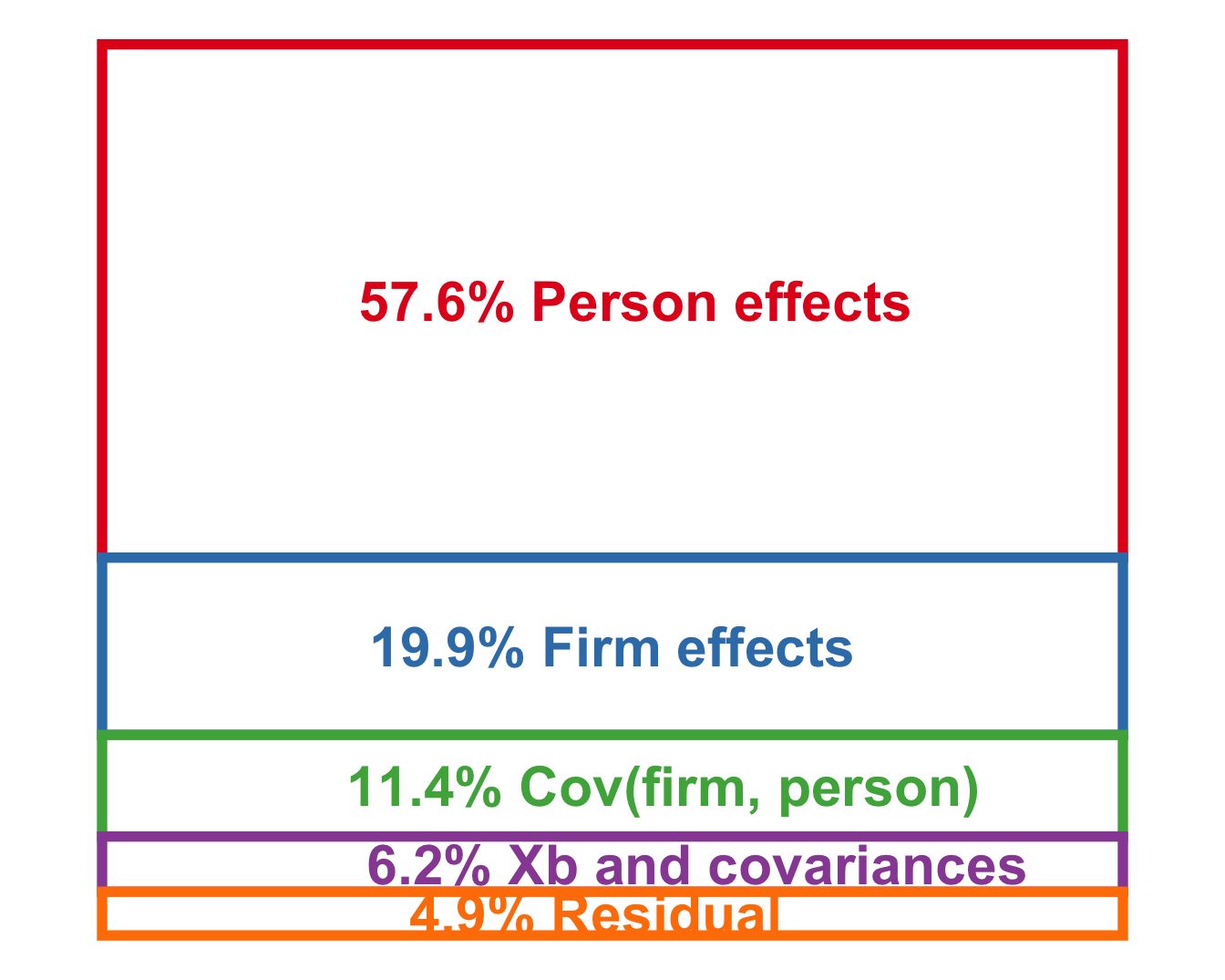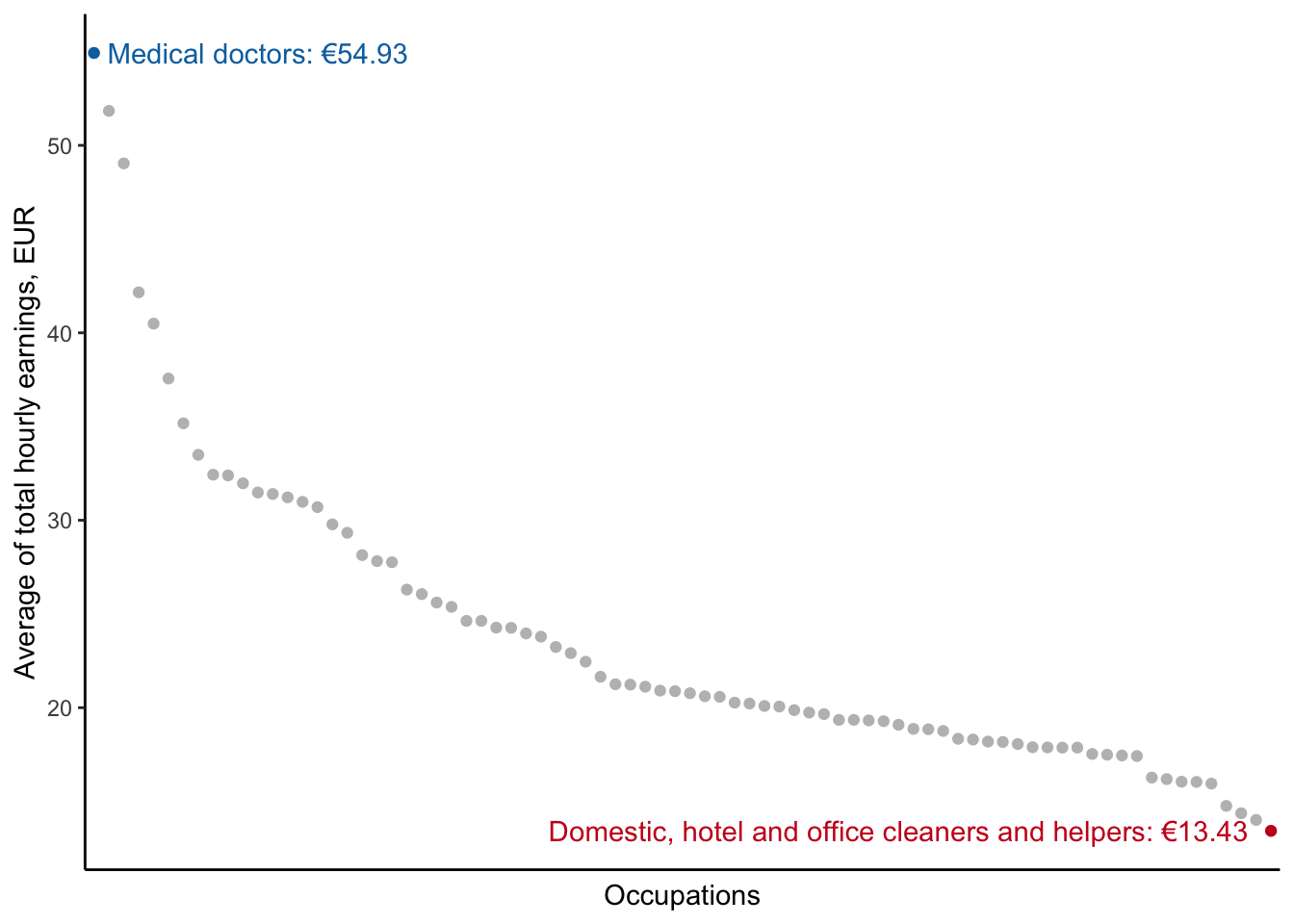
5. Wage setting
KAT.TAL.322 Advanced Course in Labour Economics
September 8, 2025
- Why do wages differ between workers?
- Compensating differentials
- Bargaining power of firms and workers
- Imperfect information about productivities and jobs
- Relative contributions of different sources to overall wage inequality
Stylised facts
Wage dispersion
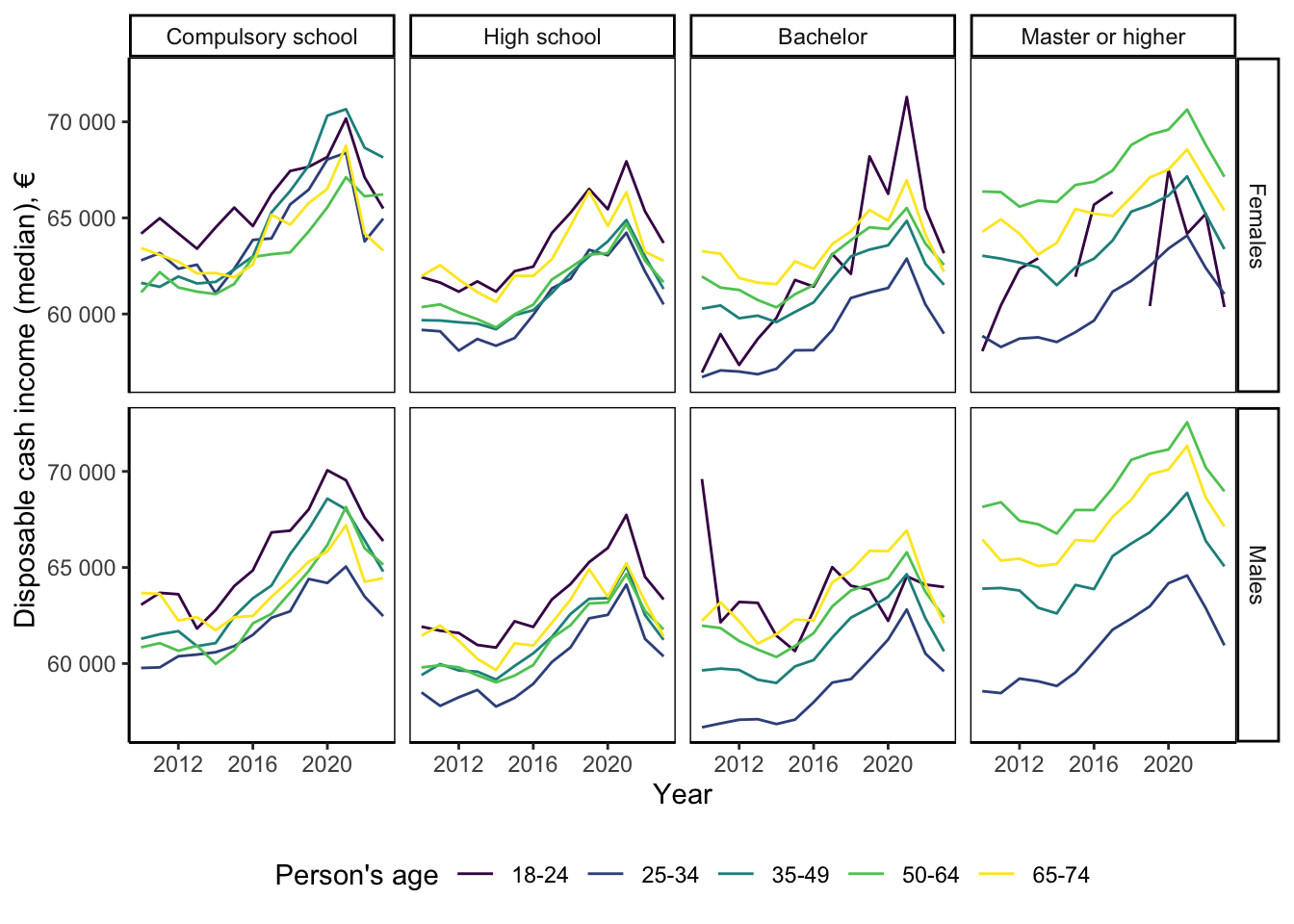
Source: Statistics Finland
Variation by occupation
Market imperfections?

Source: Occupational Employment and Wage Statistics (US)
Perfect competition
Jobs of equal difficulty
Production function F(L):FL(L)=y
Workers supply h=1 unit of labour and receive wage w if hired
Linear worker utility U(R,e,θ)=R−eθ
- R=w if employed; R=0 otherwise
- e difficulty of jobs, e=1 is constant
- θ≥0 heterogeneous disutility (Gθ(⋅) CDF)
Equilibrium
Ld={+∞if w<y[0,+∞)if w=y0if w>y
Ls=G(w)
Jobs of equal difficulty
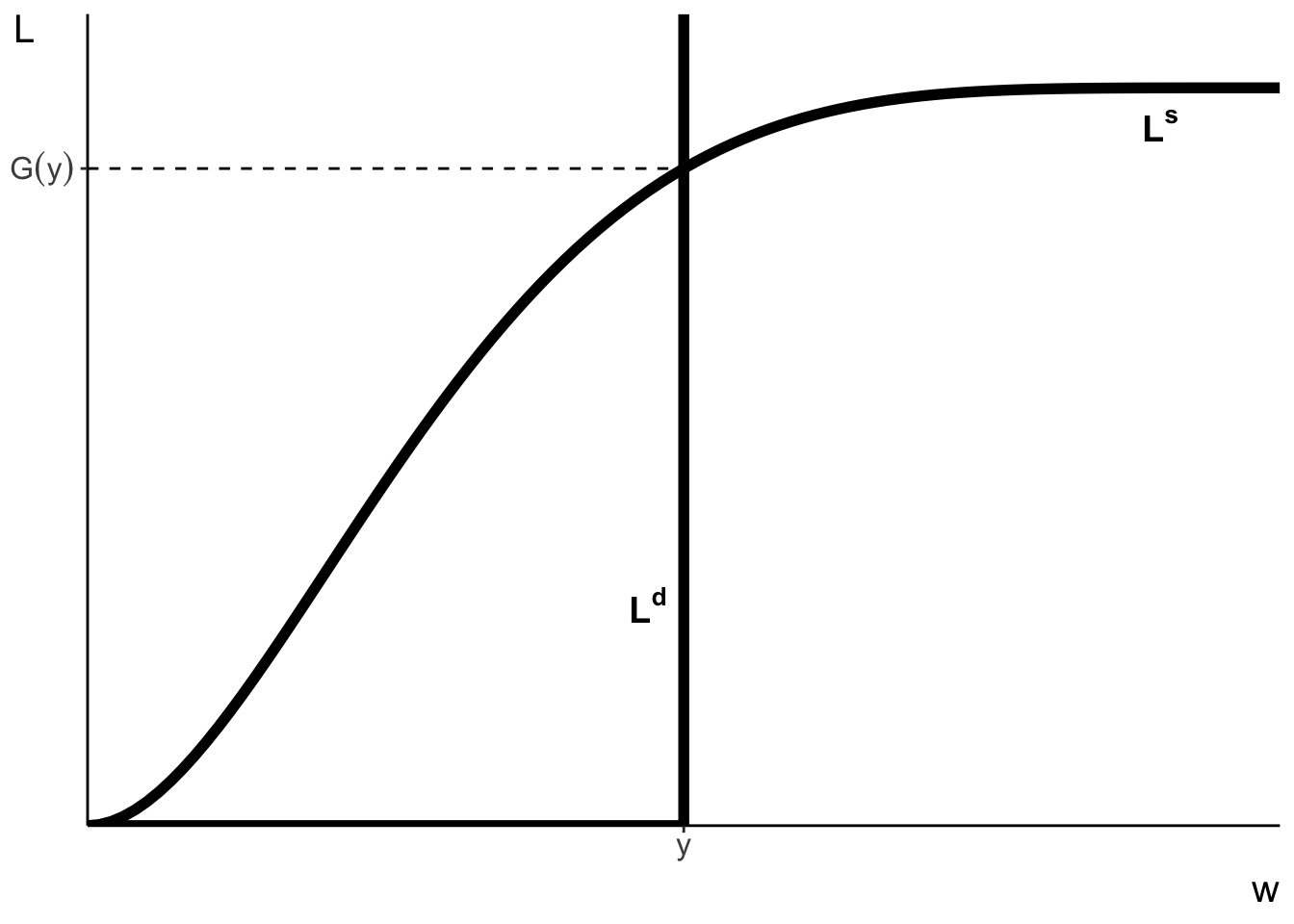
Jobs of varying difficulty
Continuum of jobs with varying difficulty e>0
Productivity y=f(e) such that f′(e)>0,f′′(e)<0,f(0)=0
e also corresponds to effort worker puts in if employed
Compensating wage differentials: w′(e)>0
Ld={+∞if w(e)<f(e)[0,+∞)if w(e)=f(e)0if w(e)>f(e)
Ls={1if f′(e)=θ∩f(e)−eθ≥00otherwise
Jobs of varying difficulty
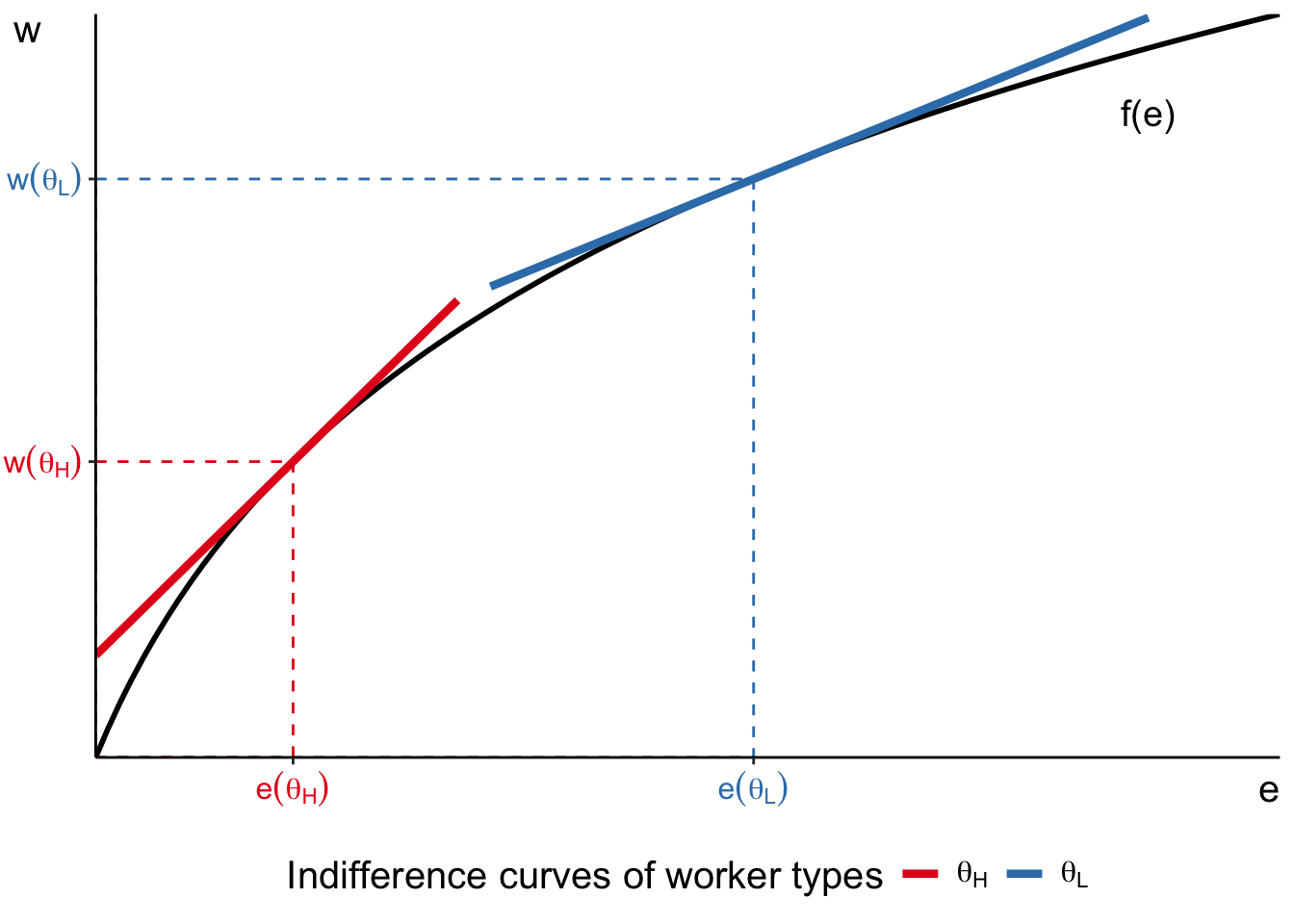
Workplace safety regulation
At baseline worker of type θ chooses optimal effort e(θ) and earns w(e(θ))
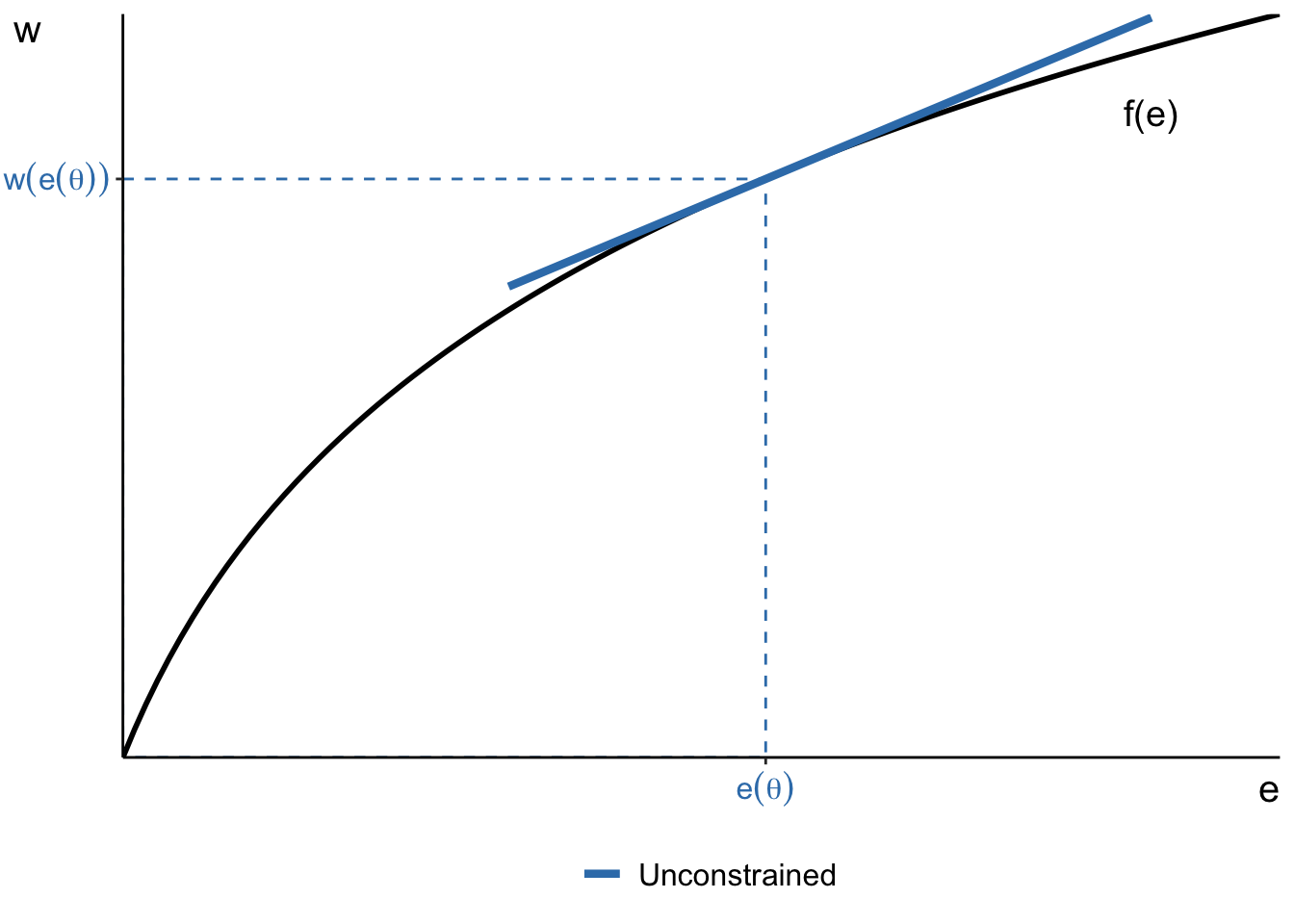
Workplace safety regulation
Limit on job difficulty ˉe forces worker type θ on a lower indifference curve
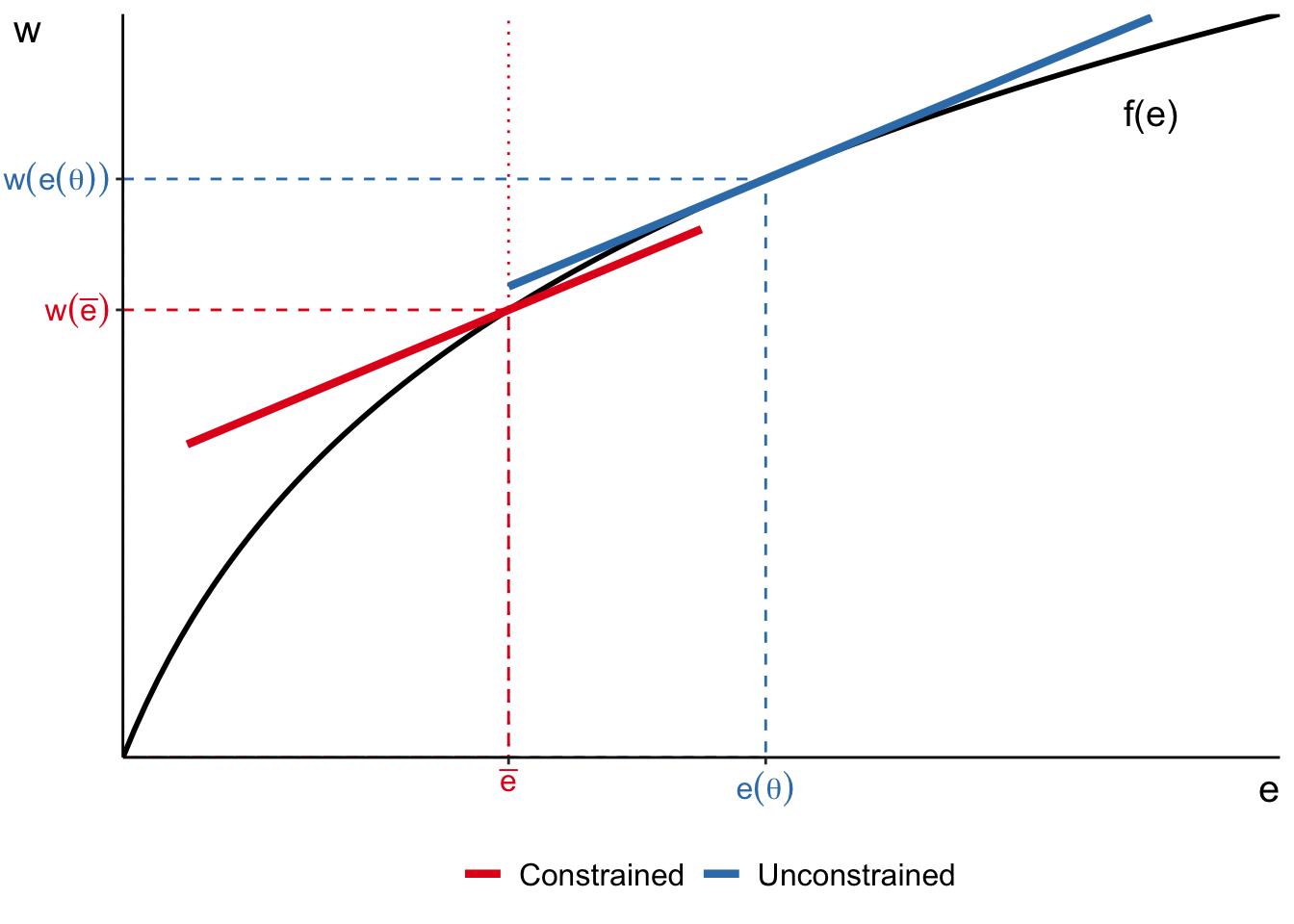
Perfect competition: summary
- Even under perfect competition, wages and labour supply decisions of workers depend on
- abilities of workers: more productive workers earn higher wages
- characteristics of jobs: more difficult jobs offer higher wages
- Efficient allocation of resources
- part of the population may choose not to work because jobs are not attractive enough
Imperfect competition
Barriers to entry: monopsonistic employer
Start from baseline model
- Continuum of workers θ with utility U(R,e,θ)=R−eθ, e=1
- Monopsonistic employer maxwπ(w)≡maxwLs(w)(y−w)
Equilibrium wage wM=yηLw(wM)1+ηLw(wM) where ηLw(wM)=wMLs(wM)dLs(wM)dw
Equilibrium employment Ls(wM)=G(wM)
Barriers to entry: monopsonistic employer
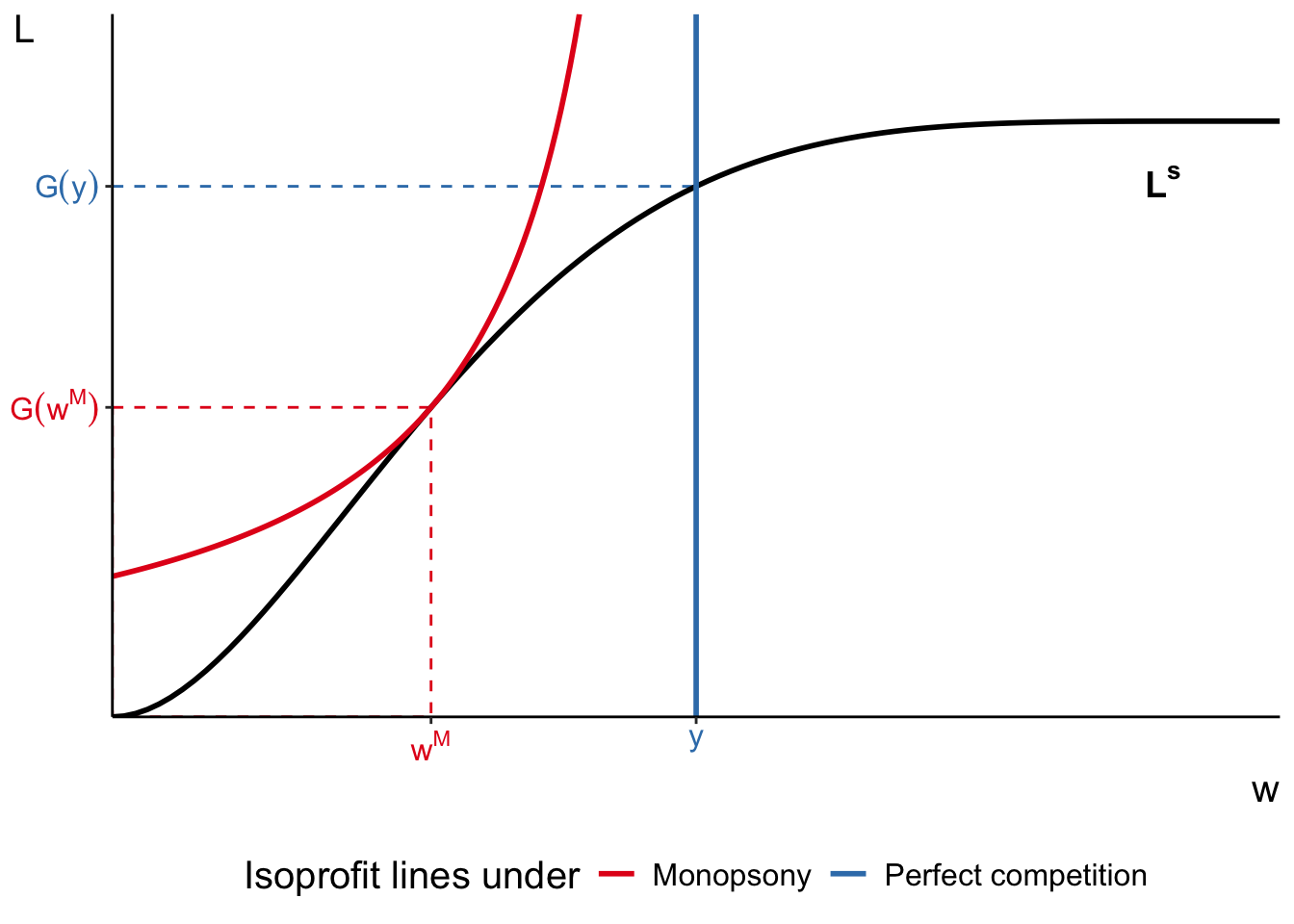
Monopsonistic employer and minimum wage
What happens if government mandates min wage wM<wmin<y?

Monopsonistic employer and minimum wage
Equilibrium employment and wages both rise!
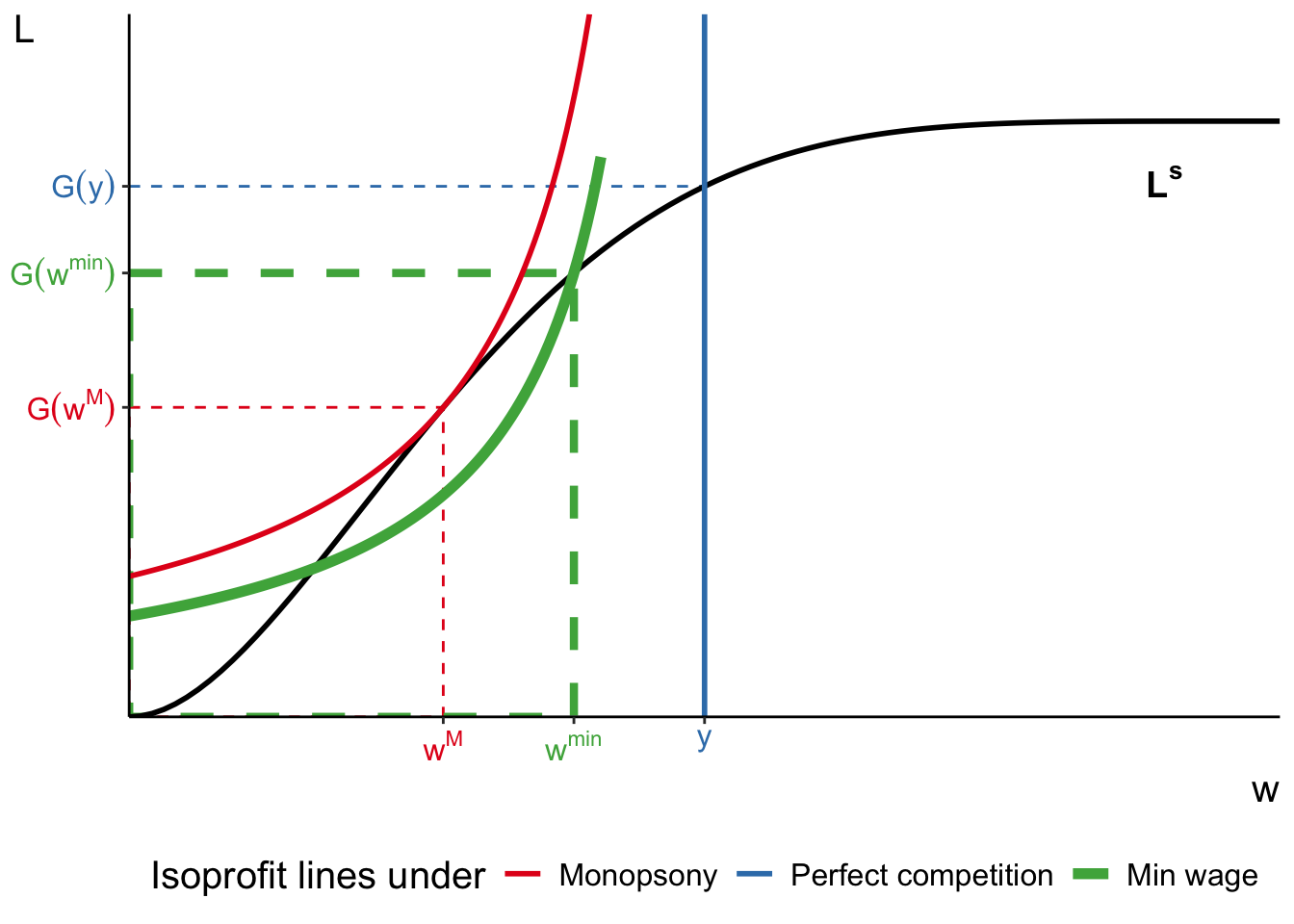
Imperfect information and adverse selection
- Workers are now described by their ability h>0 with CDF G(⋅)
- produce h units of good
- enjoy leisure utility d(h) such that d′(h)>0 and d(h)<h
- Workers enjoy utility U(R,d)={w(h)if hiredd(h)otherwise
- Firms now offer identical jobs e=1 and maxLE[(h−w(h))L]
- Firms do not observe true h of workers (only see the distribution G(⋅))
Imperfect information and adverse selection
Equilibrium is described by a pair (w⋆,h⋆) such that
- all workers with h<h⋆=d−1(w⋆) decide to work
- firms hire all workers ready to work at w⋆=E(h|w⋆)
We can graphically illustrate the equilibrium by plotting d−1(w) and E(h|w) on the next slide
Imperfect information and adverse selection
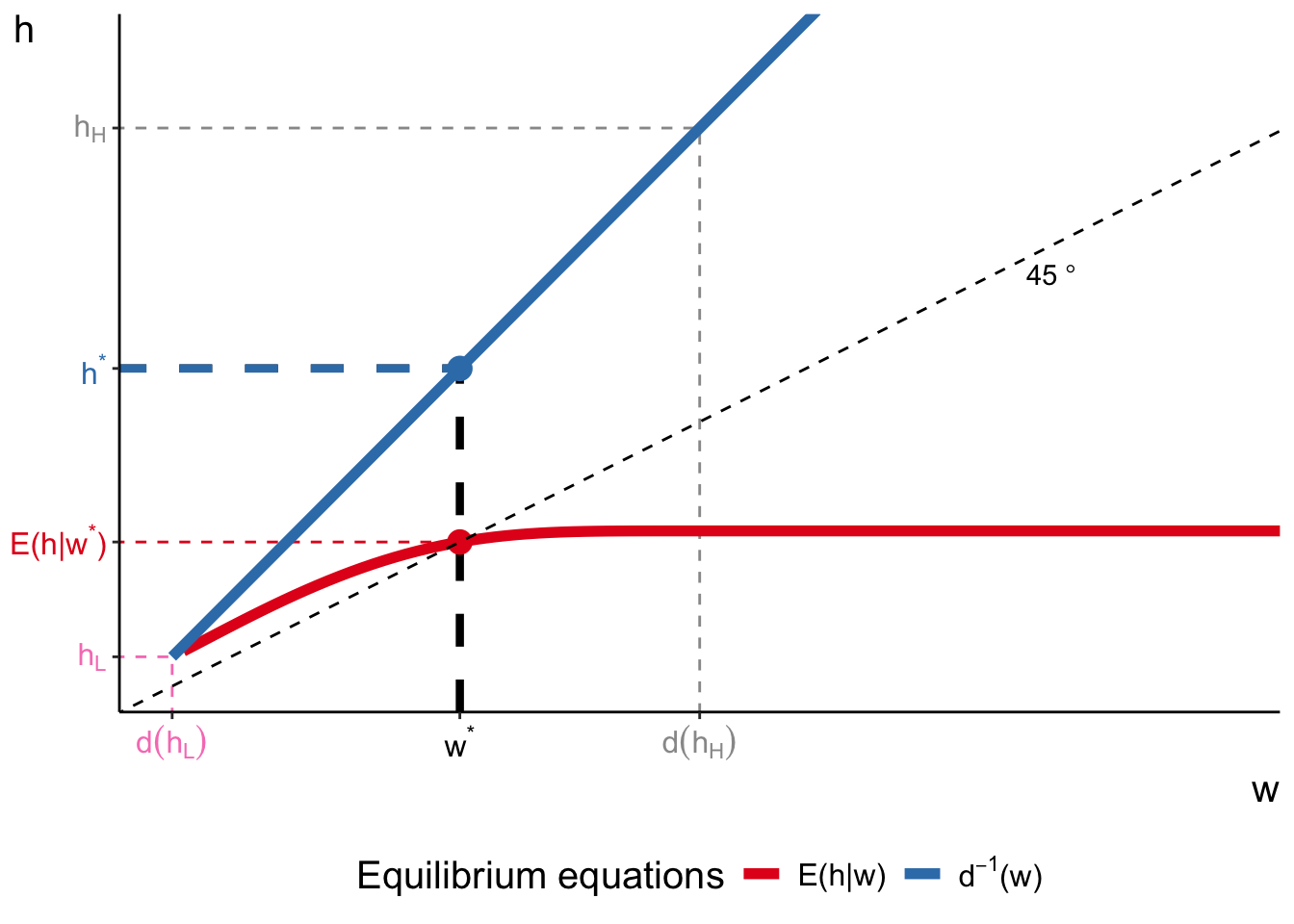
Imperfect competition: summary
Wages no longer reflect productivity differences alone
- monopsonistic employer: equilibrium wages and employment ↓
- innovation and mobility costs (Cahuc 2004, ch 5.2)
- trade unions (Cahuc 2004, ch 7)
- Workers and firms may have incomplete information about each other
- In the example, where firms do not know true worker productivities
- w⋆ may be too high for some workers and too low for others
- adverse selection: most productive workers stay unemployed
- Last lecture, workers have imperfect information about jobs
- with on-the-job search and endogenous wages, w>y for senior workers
Empirical evidence
Estimates of compensating differentials
Regression of wage w on job difficulty e
lnwi=xiβ+eJ(i)α+ε
- xi - observed worker characteristics
- eJ(i) - observed job characteristics of worker i
Early estimates biased by
- unobserved heterogeneity in productivity
- unobserved heterogeneity in preferences
Estimates of compensating differentials
Unobserved heterogeneity in productivity
Consider again model with varying e and two workers with fH(e),fL(e)
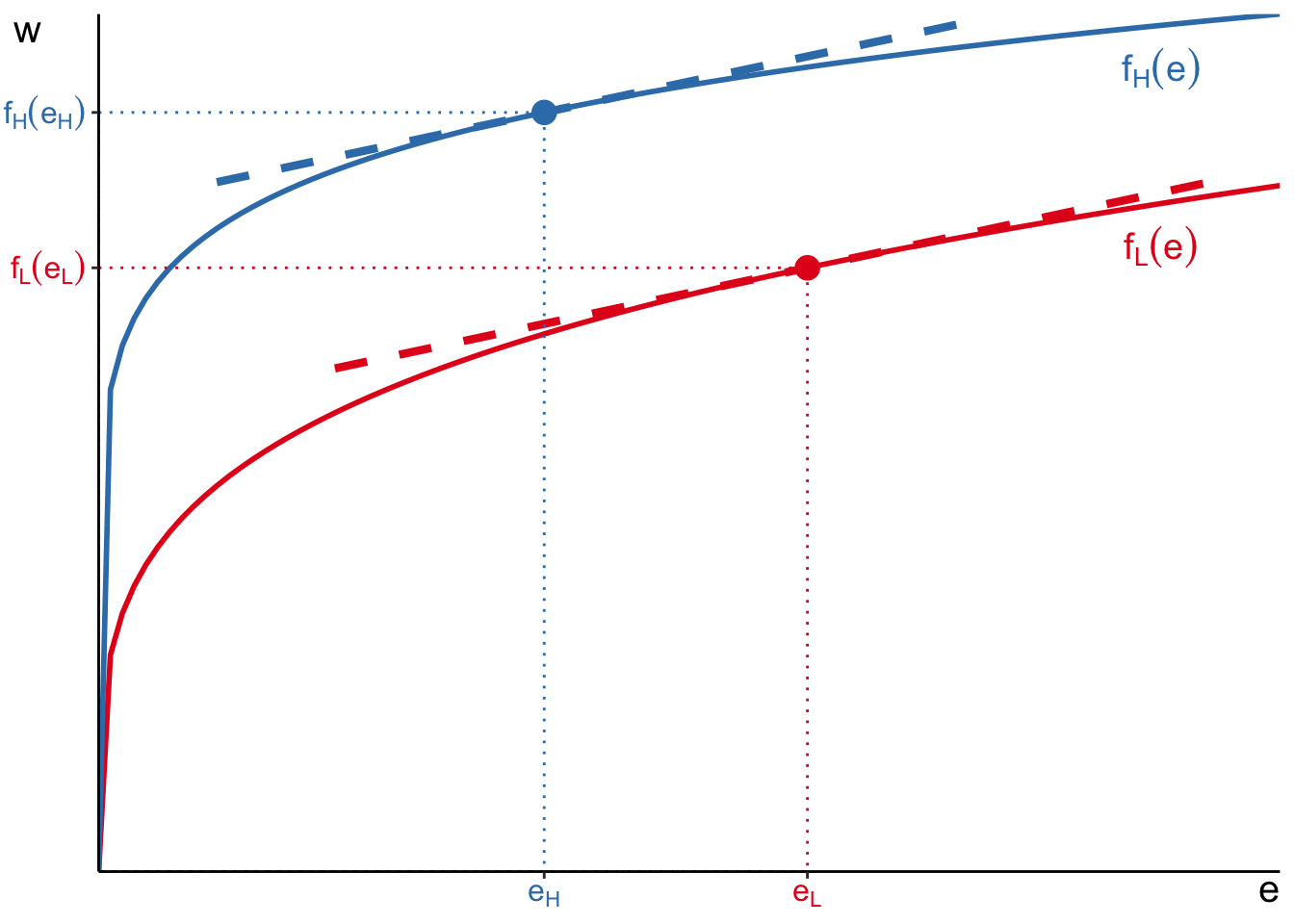
Estimates of compensating differentials
Hwang, Reed, and Hubbard (1992)
| Thaler and Rosen (1976) | Hwang et al. (1992) | |
|---|---|---|
| Age | 3.890 | 4.500 |
| (0.800) | ||
| Age 2 | -0.048 | -0.096 |
| (0.009) | ||
| Education | 3.400 | 4.870 |
| (0.550) | ||
| Risk | 0.035 | 0.302 |
| (0.021) | ||
| R2 | 0.41 | 0.31 |
| Price of life saved (in years of wage) | 26.54 | 227.67 |
| Mean weekly wage | 132.65 | 132.65 |
Estimates of compensating differentials
Bonhomme and Jolivet (2009)
Job search frictions: even small costs enough MWP ≠ wage differentials
| Finland | ||
|---|---|---|
| MWP | Wage differentials | |
| Type of work | 0.016 | 0.107 |
| (0.180) | (0.040) | |
| Working conditions | 0.070 | 0.004 |
| (0.080) | (0.030) | |
| Working times | -0.016 | 0.048 |
| (0.070) | (0.040) | |
| Distance to work | 0.162 | -0.031 |
| (0.060) | (0.040) | |
| Job security | 0.537 | 0.068 |
| (0.220) | (0.040) | |
Estimates of compensating differentials
Lamadon, Mogstad, and Setzler (2022)
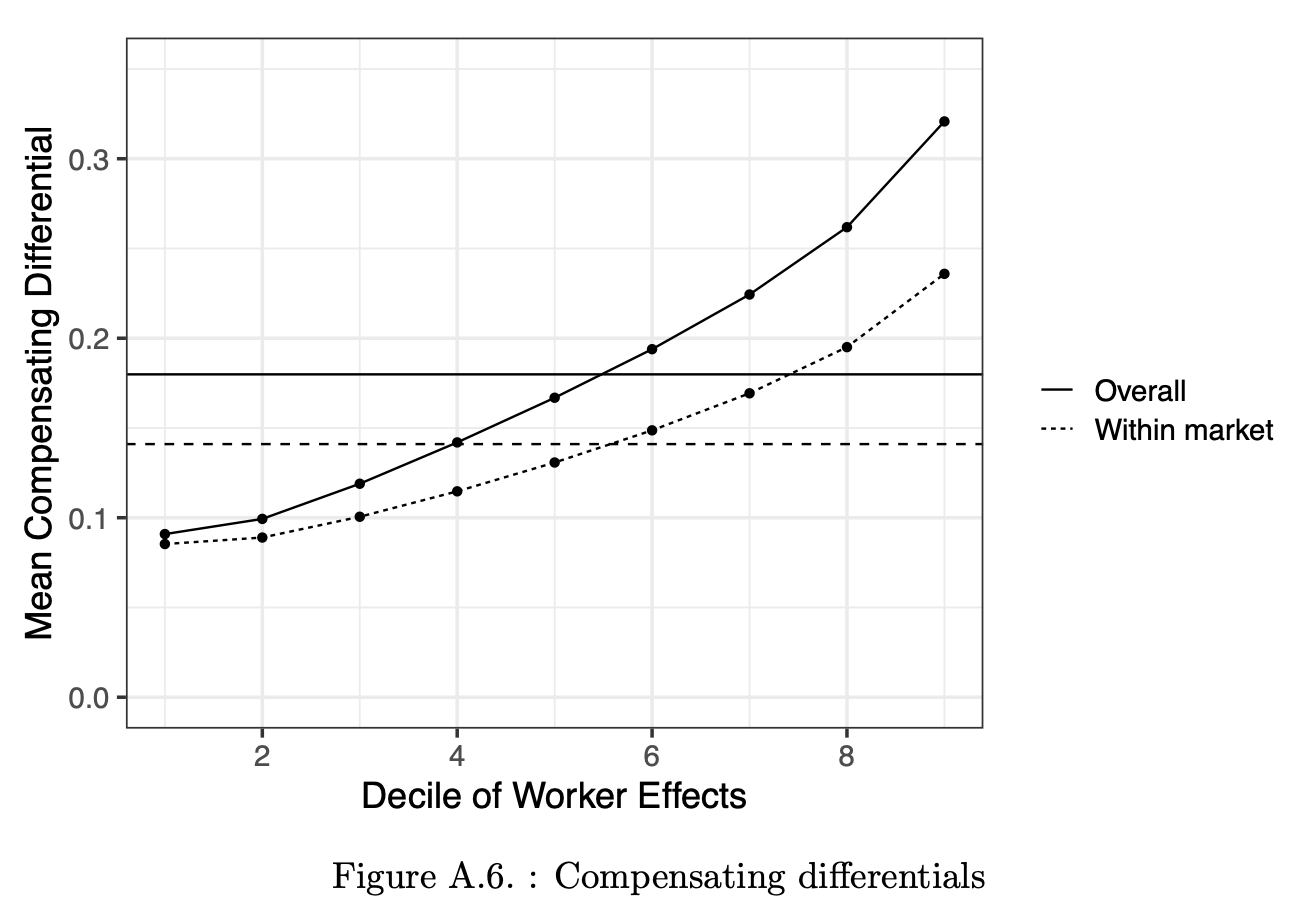
Determinants of wage inequality
Taber and Vejlin (2020)
Estimate importance of four channels of wage heterogeneity:
- Roy model: comparative advantage in skill for job
- Job search model: search and mobility costs
- Compensating differentials model: preferences for non-wage attributes
- Human capital model: boost productivity while working
Determinants of wage inequality
Taber and Vejlin (2020)
| A | Variance |
|---|---|
| Total | 0.104 |
| No learning by doing | 0.096 |
| No monopsony | 0.093 |
| No premarket skill variation across jobs | 0.05 |
| No premarket skill variation at all | 0.008 |
| No search frictions | 0.007 |
| B | Variance |
|---|---|
| Total | 0.104 |
| No learning by doing | 0.096 |
| No monopsony | 0.093 |
| No search frictions | 0.086 |
| No premarket skill variation across jobs | 0.049 |
| No premarket skill variation at all | 0.007 |
| C | Variance |
|---|---|
| Total | 0.104 |
| No learning by doing | 0.096 |
| No monopsony | 0.093 |
| No nonpecuniary aspects of jobs | 0.087 |
| No premarket skill variation across jobs | 0.048 |
| No premarket skill variation at all | 0.006 |
| D | Variance |
|---|---|
| Total | 0.104 |
| No learning by doing | 0.096 |
| No monopsony | 0.093 |
| No nonpecuniary aspects of jobs | 0.087 |
| No search frictions | 0.061 |
| No premarket skill variation across jobs | 0.047 |
Determinants of wage inequality
Firm-specific wage premiums
Firms may pay different wages to otherwise identical workers
Yit=β0+β1Xi+θi+ψJ(i)+εit
Summary
- Wage dispersion can be related to
- individual heterogeneity in productivity/job tastes
- heterogeneity in job conditions
- monopsonistic employers forcing wage ↓ for some workers
- seniority premium with incomplete information and labour market costs
- Incomplete information can also drive most productive workers out
- Differentiating between different channels in data can be challenging
Next lecture: Human Capital on 10 Sep
